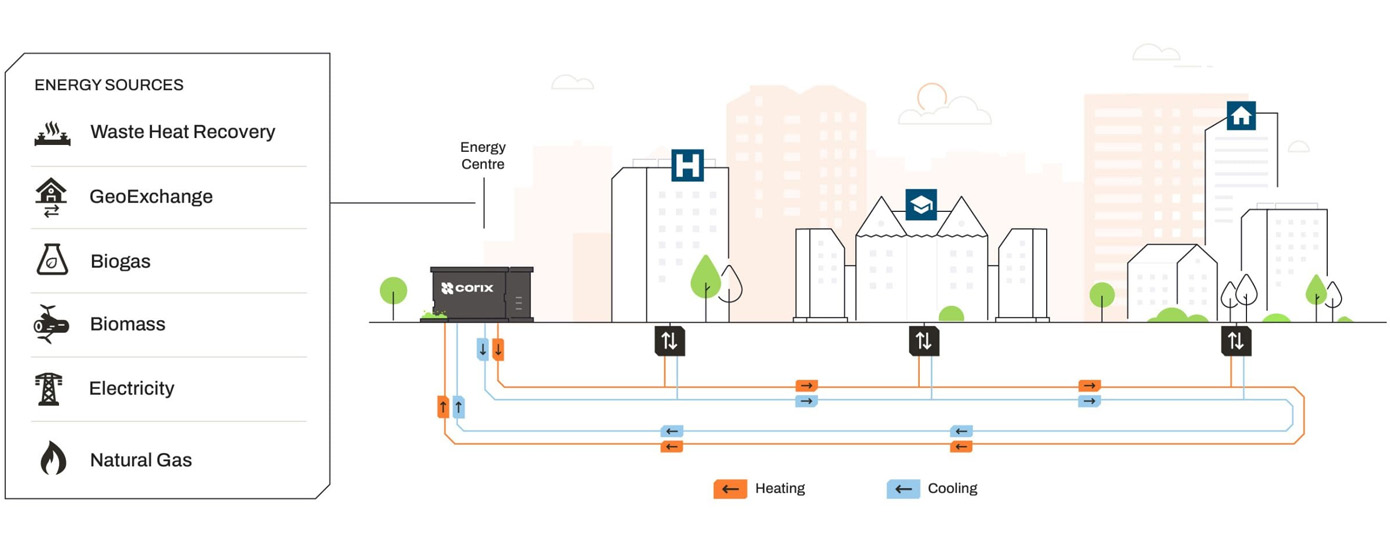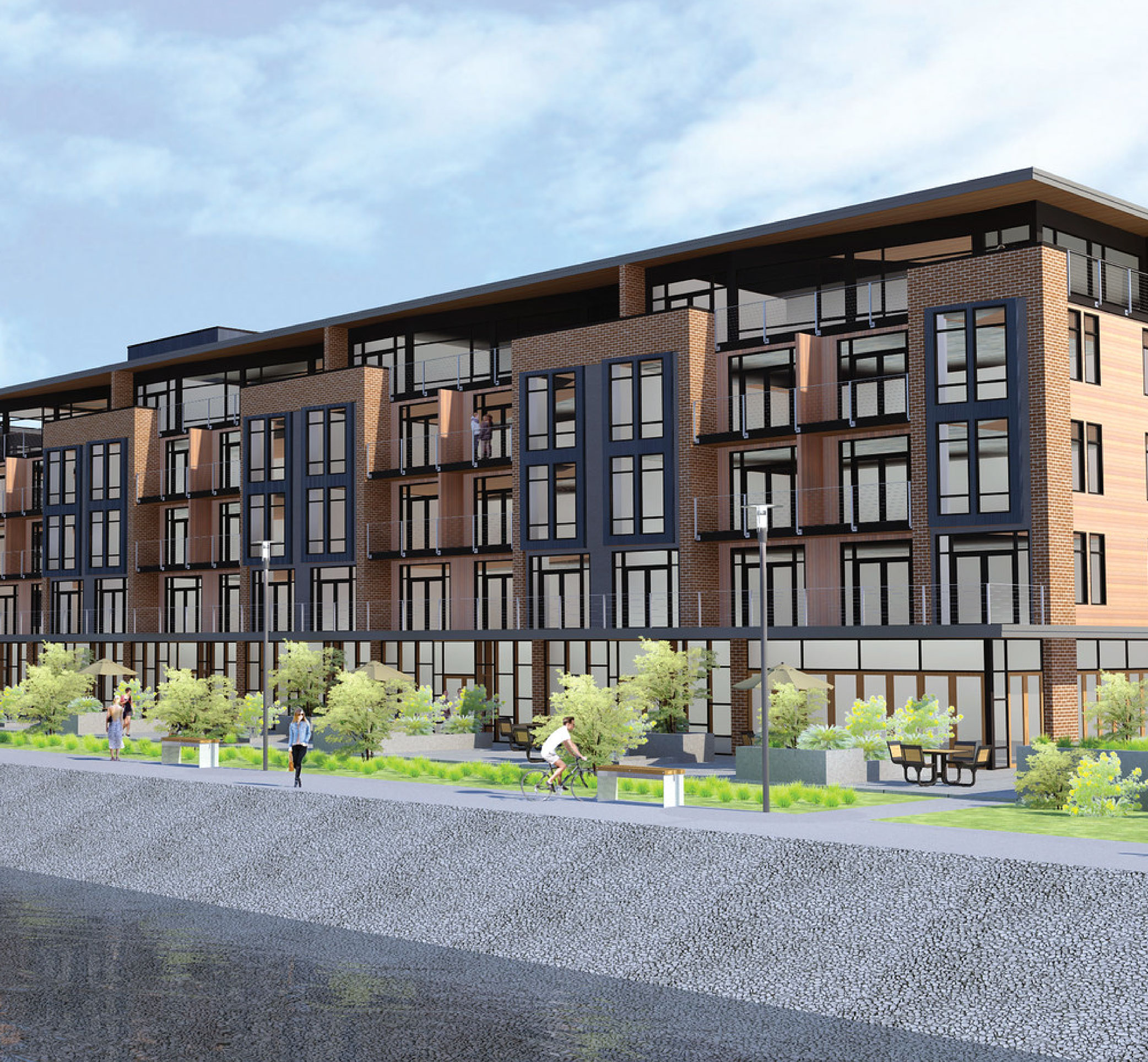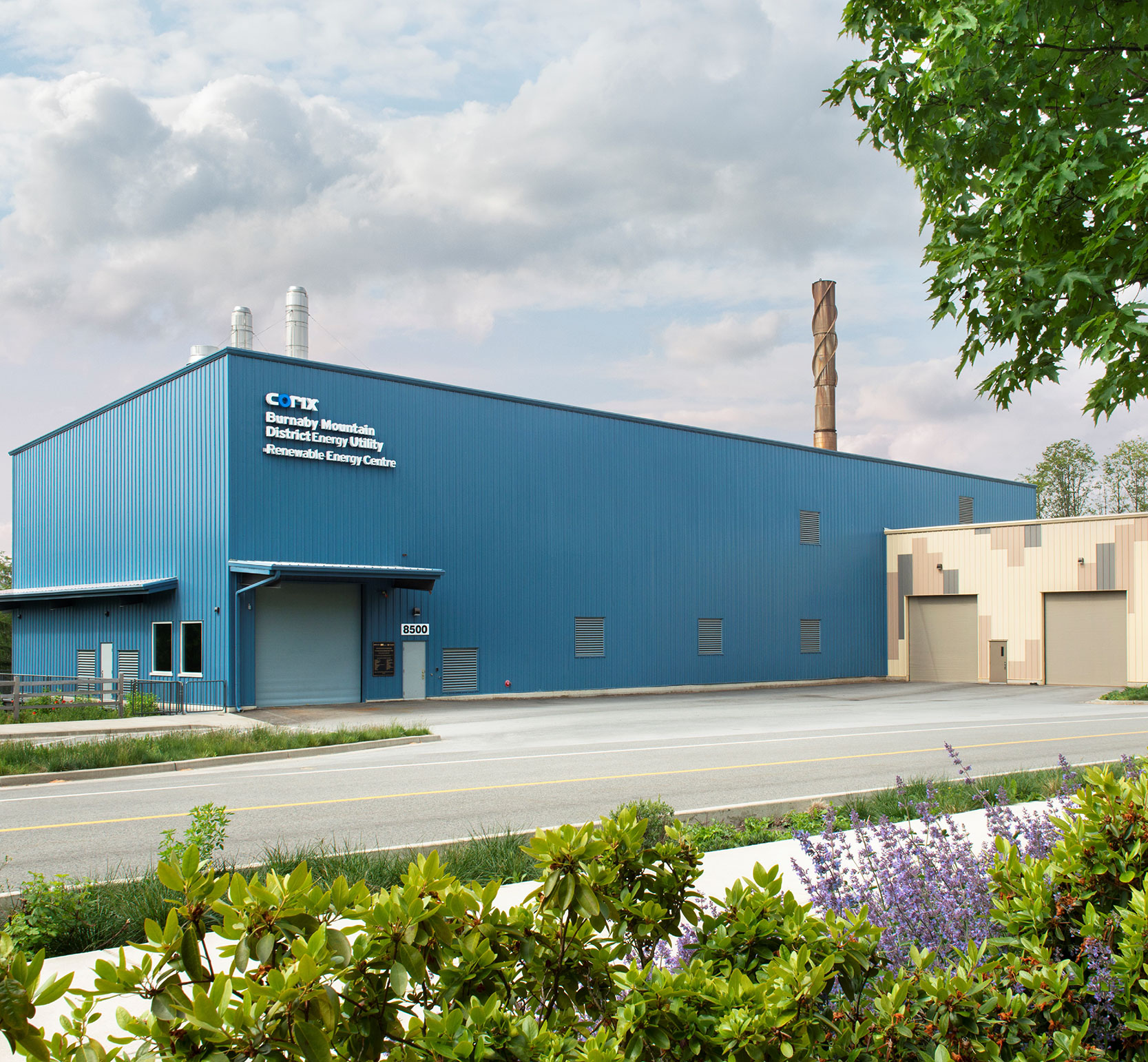How District Energy Works
District energy systems centralize the production of heating and cooling. Energy is distributed to customers through an underground piping network to heat exchangers located in each connected building. This allows the system to share energy across a network of buildings efficiently and eliminates the need for separate space heating, cooling, and hot water systems. That means a reduced carbon footprint, more usable space within the buildings, and cost savings on maintenance and equipment.

One Platform, Many Benefits
District energy (DE) systems offer more than flexibility and scalability. They’re a trove of environmental and economic benefits. Customers — including developers, institutional campuses, cities, and municipalities — reap the rewards.
More Efficient Energy
DE systems use fewer resources to produce the same amount of energy as traditional systems.
Reduced Carbon Footprint
The system’s energy efficiency and use of alternative energy sources reduce greenhouse gas emissions and minimize the community’s carbon footprint.
Resilience and Adaptability
DE systems have the flexibility to add or change energy sources without the need to modify the residential building’s equipment.
Reliability
DE plants and infrastructure have comprehensive built-in contingency and redundancy, guaranteeing reliable heat, hot water, and cooling are readily available 24/7/365.
Simplicity
DE systems eliminate the need for mechanical equipment maintenance and replacement, freeing strata or homeowner associations from the cost and responsibility.
Competitive Rates
On a lifecycle basis, energy costs through DE systems are comparable to traditional in-building applications.
Additional Usable Space
The centralized solution provides mechanical room space savings and optimizes the use of rooftop or parking spaces and, depending on the jurisdiction, extra density.
Cost Savings
Developers can save 70-80% compared to traditional mechanical equipment costs. Plus, if you retain ownership of the building, you’ll avoid ongoing operations and maintenance expenses and equipment replacement costs.
Energy Sources
Electricity, depending on how it’s generated, can be a low-carbon energy source, complementing advanced technologies like air- or water-source heat pumps.
Geothermal systems harness energy from natural thermal sinks found underground or in large bodies of water.
Biomass systems use energy from renewable organic matter, like wood waste from forestry and wood processing operations.
Surplus heat from sources such as sewage, cooling (from data centres), and other industrial processes can be a reliable low-carbon energy source.
Natural gas can be an effective transitional fuel source when used in high-efficiency boilers for peaking or redundancy.
Biogas, primarily composed of methane and carbon dioxide, is a renewable gas source produced from the decomposition of organic waste. It can be burned directly or further treated for use like natural gas.
Additional Resources
Looking for a trusted source of district energy news, information, and global best practices? Look no further:



